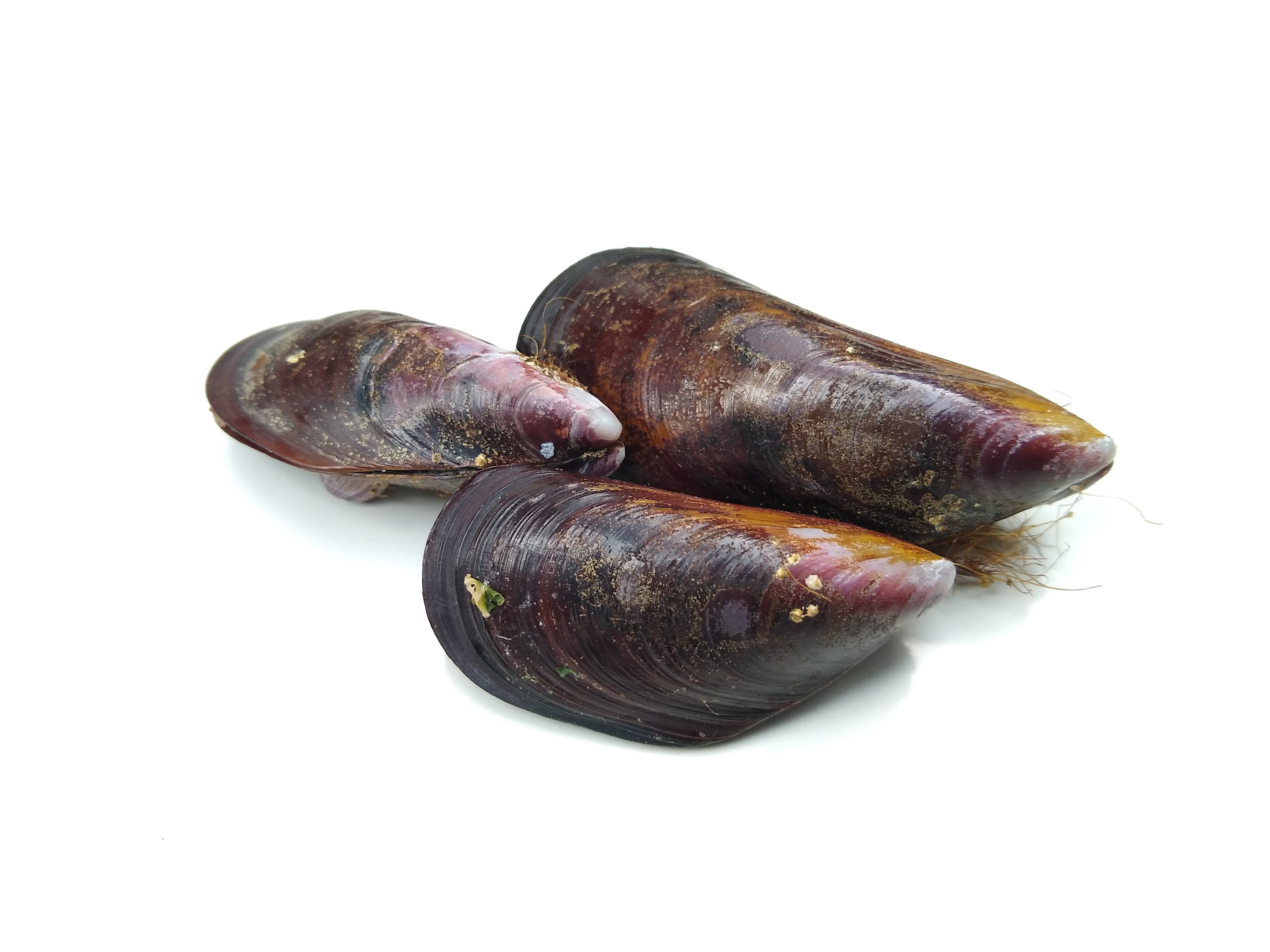Brown mussel
(Perna perna)

Description
Perna perna, the brown mussel, is an economically important mussel, a bivalve mollusc belonging to the family Mytilidae. It is harvested as a food source but is also known to harbor toxins and cause damage to marine structures. It is native to the waters of Africa, Europe, and South America and was introduced in the waters of North America. Perna perna is usually 90 mm long although it can reach sizes of up to 120 mm. The mussel is easily recognized by its brown color but its identifying characteristic is the "divided posterior retractor mussel scar". Its pitted resillal ridge also differentiates the mussel from other bivalves. Similar species include the European mussel, Mytilus galloprovincialis, and the black mussel, Choromytilus meridionalis. The European mussel is similar in shape and color to the brown mussel and shares its native habitat on the south-western coast of Africa. The European mussel is also more resistant to human disturbance such as use for baits and consumption. It is out-competing the brown mussel as it is more resistant to certain parasites. The black mussel has similar shape and size although it lacks the distinguishable pitted resillal ridge. The brown mussel can also be mistaken for the more famous greenish-brown species Perna viridis, as their color and shell shape can change depending on environmental conditions. The brown mussel is native to the tropical and sub-tropical regions of the Atlantic Ocean and Western Indian Ocean. It is found in waters off the west coast of Africa and the coast of South America up to the Caribbean, as well in the East Coast of Africa and Madagascar. It is accidentally introduced as an invasive species to the coast of Texas via the boat hulls and water ballasts of ships from Venezuela. Its distribution include: Chile, Peru, South Africa. The brown mussel naturally colonizes rocky shores but can also attach to submerged man-made objects such as navigation buoys, petroleum platforms and shipwrecks. The adult brown mussel can tolerate a temperature range of 10 to 30 °C and a salinity range of about 15 to 50 ppt. Its colonization of the hard strata improves that surface's marine ecology. The colonization increases surface area, encouraging other marine organisms such as limpets, polychaetes, barnacles, snails and algae to settle there as well.
Taxonomic tree:







